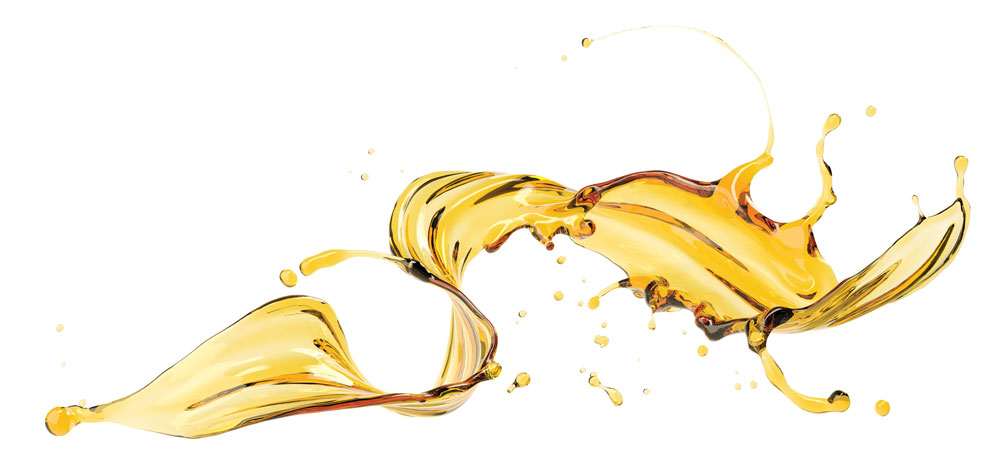- Ingredients made in Italy have become big business in the U.S., but fraud abounds, and “authentic Italian” has become a “buyer beware” market.
- If you’re not shelling out a lot of money for your San Marzano tomatoes, you are almost certainly buying something else entirely.
Related: Italian experts name the best pizzeria in the U.S.
Authentic Italian pizza ingredients and other food products are often perceived as synonymous with quality in the American market. Italy’s rolling landscapes, respect for tradition and exaltation of beauty make it an excellent locale to grow, craft and process superb meats, vegetables and cheeses. Italy is also home to an ever-growing number of food consortiums that ensure the quality and tradition of artisanal products. While the “Made in Italy” claim has its own cachet, products labeled I.G.P. (Indicazione Geografica Protetta or, in English, Indication of Geographical Protection) or D.O.P. (Denominazione di Origine Protetta, or Protected Designation of Origin) are supposed to deliver an authentic product.
Needless to say, products made in Italy have become big business in the United States. Several Italian brands appeal to the world with marketing shamelessly focused on their Italian-ness. One Italian beer brand uses the catchphrase “More Italian” in its global marketing campaign. Meanwhile, a water brand describes itself as “Tastefully Italian” to American consumers. Italians are quite good, above all, at marketing themselves. But fraud abounds, too, and because there’s a lot of money at stake, “authentic Italian” has become a “buyer beware” market.

Getty Images
You Say Tomatoes
So how important are authentic Italian pizza ingredients in our business? It mostly depends on your brand. If you offer a regional style of American pizza—like Old Forge or St. Louis styles—importing ingredients from Italy might not make sense. Some members of PMQ’s Think Tank note their customers are more interested in knowing whether ingredients are locally grown rather than imported from Italy, although these operators don’t have Italian-focused restaurants.
For American pizzeria chefs intent on recreating Italian fare, using products like D.O.P. San Marzano tomatoes adds a touch of legitimacy. Authentic Italian pizza ingredients come with Old-World history and stories that provide marketing opportunities. These products will be more expensive to acquire, but you can also charge more when you educate the customer on why these tomatoes make your pizza special: San Marzano tomatoes carry a hefty price tag because they are limited to a singular geographical area, grown only in the rich volcanic soil around historic Mt. Vesuvius. These are expensive tomatoes, and if you’re not shelling out a lot of money for them, you are almost certainly buying something else entirely.
Related: Is your sauce the boss? Try these tips for better pizza sauces
In fact, like so many high-demand niches, the Italian food market is riddled with fraud. Italian import company Gustiamo estimates some 95% of San Marzano tomatoes sold in the States are impostors. To protect yourself, remember that real San Marzano tomatoes are always peeled, canned, and sold only in whole or fillet form. And legit San Marzanos will bear the D.O.P. seal and a Consorzio San Marzano certification number on the bottom of the can. Even so, keep in mind there have been allegations of fraud even with these “official” designations.
“Olive oil is one of the dirtiest markets in the whole world…I get so aggravated when I see Italian extra-virgin olive oil selling for $6.99 at the store. There is no olive oil for that price made in Italy.”
— Leonardo Giordano, Mona Lisa Pizzeria

So-called authentic Italian pizza ingredients aren’t always authentic or even Italian. (Getty Images)
Drilling for Oil
The olive oil industry, in which lax regulations allow labels to mislead consumers, suffers a similar crisis in authenticity. According to the California Olive Oil Council, anyone can label their olive oil as “extra-virgin,” regardless of what’s in the bottle. Although European laws are stricter, they are not applied to products leaving the European Union. Numbers provided by the International Olive Council show that Italy consistently exports more olive oil than it produces, leaving one to wonder: What is filling in the gaps?
Related: Welcome to the new world of domestic olive oils
“Olive oil is one of the dirtiest markets in the whole world,” says Leonardo Giordano, an olive oil importer and owner of Mona Lisa Pizzeria in Staten Island, New York. “Everyone mixes oils, even in Italy. I get so aggravated when I see Italian extra-virgin olive oil selling for $6.99 at the store. There is no olive oil for that price made in Italy. It’s like buying Parmigiano-Reggiano for $2.99. You know that’s not right. A bottle of [Italian] olive oil is at least $11 or $12. If that’s too expensive, don’t buy it at all. There is nothing worse than seeing a beautiful margherita pizza topped with basil and then a cheap oil. It’s like getting punched in the eyes.”
But how do you pick out the good stuff? Remember that primary ingredients such as olive oil or tomatoes can be found throughout the world, while authentic Italian pizza ingredients that require elaboration—think cured meats and aged cheeses—can’t be easily replaced by substitutes. Tomatoes are native to the Americas, and any region with a Mediterranean-like climate (like California, Tunisia, Spain and Argentina) can produce great olive oil. Depending on the type of olives and the climate in which they’re grown, there will be differences in taste and color (as with grapes). But, unlike wine, olive oil is best when it’s fresh.
Making the Grade
There are essentially three grades of olive oil, depending on how the oil is extracted from the olives. Here’s a basic guide to help you better understand them:
Extra-virgin olive oil—This high-quality and flavorful oil is made with cold-pressed olives and is free from imperfections. No chemicals or extreme heat can be used during the extraction process.
Virgin olive oil—This oil, also extracted from cold-pressed olives, has some irregularities and a slightly higher level of oleic acid. It’s rarely sold in grocery stores, unlike regular or “pure” olive oils (typically a blend of virgin and refined olive oils) and light olive oils (refined oils with a neutral taste and higher smoking point).
Pomace olive oil—Heat and solvents are used to extract this lower-grade oil from the olives’ pulp and pits after the virgin or extra-virgin oil has been removed.
Flour: Biga and Better
One exception to the above-mentioned primary vs. elaboration rule is flour. Although flour can be considered a primary ingredient, the processing of the grain is highly developed at a technical level in Italy. The average competitive Italian mill offers an extensive variety of flour lines. Each brand creates its own blend to accommodate different pizza styles, balancing protein and gluten content to achieve a desired outcome. A few of these mills house their own biga, or mother dough, which has carried on continuously for generations. Advanced technology allows the mills to dehydrate the biga and mix it in with the flour, giving any pizza maker—including those in America—the opportunity to create a product with Old-World maturation.
Related: Tom “The Dough Doctor” Lehmann takes a closer look at the new pizza flours from Ceresota
Italian Cheese: A Brand All Its Own
While great cheeses are produced in Wisconsin, California, Vermont and other American states, it’s hard to beat aged Italian cheeses. Italy’s consortium model for protecting artisan cheesemaking distinguishes it from the American approach. Cheeses that are classified as D.O.P. or I.G.P.—that is, those made according to strict cultural traditions—are first and foremost labeled as traditional products. The name of the company or brand that made the cheese appears practically as an afterthought on the labeling. Italian cheese heritage is a brand all its own.
Related: Experts weigh in on the latest pizza cheese trends.
As for soft and fresh cheeses, however, the faster you can get them from farm to table, the better. Freshness is extremely important in the mozzarella and burrata making tradition. In America, several companies create fresh cheeses rooted in Italian tradition. A couple of farms have even gone to excruciating lengths to import and raise water buffaloes. The milk from a water buffalo contains almost twice as much fat as cow’s milk, replicating the delicious mozzarella di bufala found around Naples.

Photo courtesy Roman Pizza Academy
Welcome to America
Of course, nothing says “authentic Italian” better than a pizzeria operated by Italians. Stefano Callegari, Gabriele Bonci and Gino Sorbillo are just a few of the top pizza chefs who have moved Stateside to open ventures and earn a lucrative living from American pizza diehards. Massimiliano Stamerra, a familiar face in the pizza world, came to America to follow his pizza dreams. The award-winning proprietor of Capri New Style in Lecce now owns Capri New Style Miami Beach. “I tried for three years to get papers to open a pizzeria in Australia, but it was too difficult,” Stamerra says. “Then I got an unexpected proposition from a man who was on vacation having pizza at my store. He worked for the business journal Il Sole 24 Ore, out of Milan, and was trying to bring business to Florida. Through that collaboration, I bought my own place in July 2018 in Miami. I opened four months later. We make fresh mozzarella and burrata every morning in the store. Everything else comes from Italy, even the bottled water. People love it.”
Related: How to make the most of your meats for more flavorful pizza recipes
It was a big leap for Stamerra to leave Italy, but he says he’s happy that he took off on this new adventure. “The restaurant is just about 80 seats, but it works very well,” he says. “In the first month alone, we made $90,000 in sales.” He says most of his clientele hail from Italy, but “many also come from Cuba, Puerto Rico—the entire world.” Which may be further proof that Americans aren’t the only ones enamored with Italy.
But is using authentic Italian products important for your business? Your branding focus and marketing strategy will determine the answer to that question. Some products that require a high level of craftsmanship are well worth the journey overseas, whereas high-quality raw ingredients can be found in abundance right here at home. If you decide to use authentic Italian-made products, don’t miss out on the marketing opportunity to educate the customer and tell the stories behind them. Italian culture is irresistible to many. Following Italian pizza makers through social media and traveling to pizza competitions abroad are some of the ways you can keep up-to-date on Italy’s evolving pizza trends—in addition to reading PMQ!
Missy Green is PMQ’s international correspondent. This article originally appeared in PMQ’s September 2019 issue.













